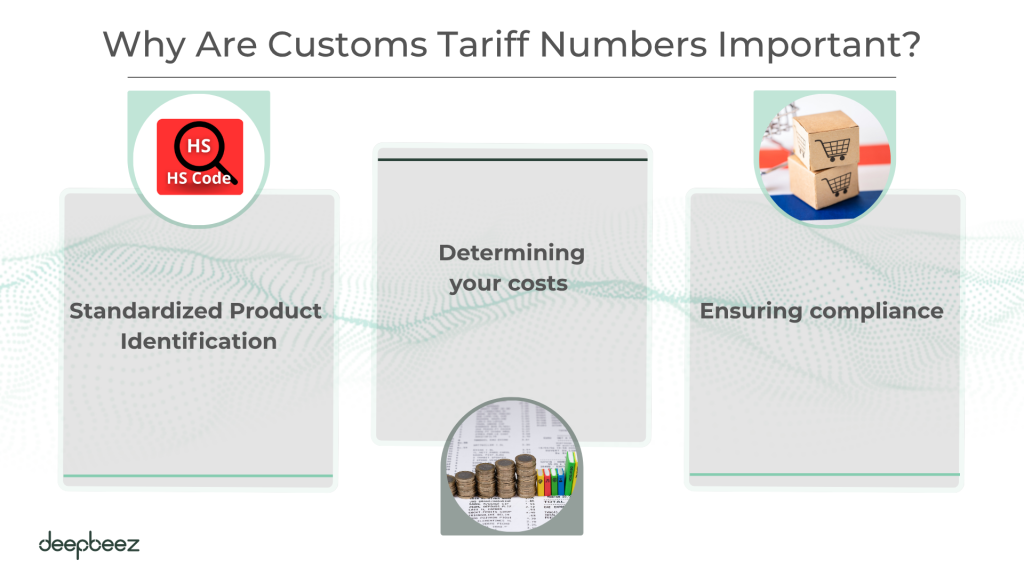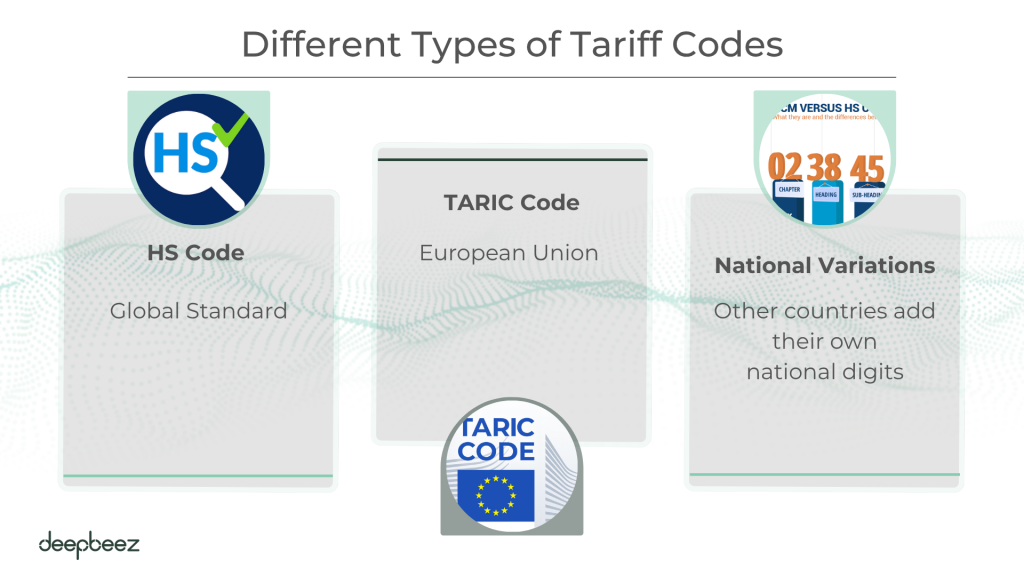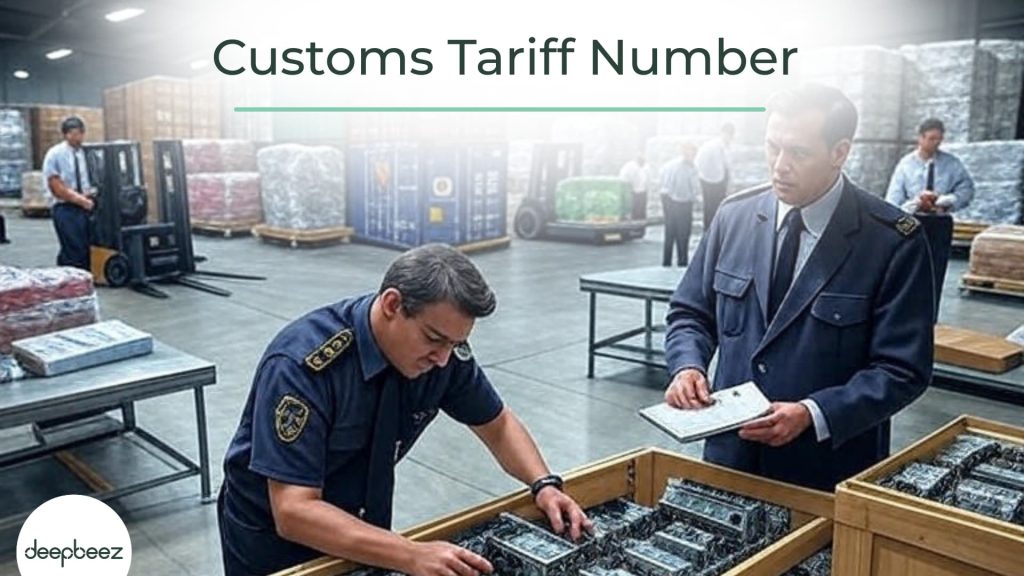Have you ever wondered how customs officials know exactly what you’re importing or exporting and how much tax to charge? The answer lies in a simple yet powerful system of numbers that acts like a universal language for international trade. Welcome to the world of customs tariff numbers – the “barcodes” of global commerce that could make or break your international business ventures.
Whether you’re a small business owner looking to expand globally or simply curious about how international trade works, understanding customs tariff numbers is crucial. You also have to be familiar with proforma invoice for customs clearance. In this comprehensive guide, we’ll break down everything you need to know about these essential codes in simple, easy-to-understand terms.
What Is a Customs Tariff Number?
Think of a customs tariff number as a product’s passport for international travel. Just like your passport identifies you at border crossings, these standardized numerical codes identify and classify goods as they cross international borders.
These codes are so important that they appear on every single customs declaration worldwide. Without them, international trade would be chaos – imagine trying to process millions of different products without a standardized system to identify them! Calculating customs duties and taxes is another challenge for exporters. You can use Deepbeez Customs Duties Calculator to get a glimpse of your costs.
Why Are Customs Tariff Numbers Important?
You might be asking yourself, “Why does this matter to me?” Well, if you’re involved in international trade in any way, these numbers are absolutely critical. Here’s why:
1- Standardized Product Identification
Every product crossing borders gets the same identification code worldwide. This means a laptop classified in Germany gets the same basic code in Japan, Brazil, or anywhere else. At this stage, you may also ask: “What is customs compliance?”
2- Determining Your Costs
Here’s where it gets really important for your wallet – the customs duty and tax rates you’ll pay are determined entirely by this classification. Get it wrong, and you could end up paying significantly more than necessary.
3- Ensuring Compliance
These codes help ensure your goods meet all the health, safety, and regulatory requirements of your destination country. The right code can mean the difference between smooth clearance and costly delays.

What Happens If You Use Incorrect Customs Tariff Number?
Incorrect classification can lead to:
- Shipment delays
- Financial penalties
- Additional inspection costs
- Legal complications
| Impact Area | Correct Classification | Incorrect Classification |
| Processing Speed | Fast clearance, possible direct release | Delays and detailed reviews |
| Costs | Accurate duties and taxes | Overpayment or penalties |
| Compliance | Smooth customs clearance | Regulatory issues and holds |
| Documentation | Proper licenses and certificates | Missing requirements discovered late |
Customs Tariff Number With Different Names
Don’t get confused if you hear different terms – customs tariff numbers go by many names depending on where you are in the world:
- Commodity Code
- HS Code (Harmonized System code)
- TARIC code (used in the European Union)
- HTS (Harmonized Tariff Schedule – USA)
- Goods code
- Product Code
- Tariff number
These are all referring to the same basic concept, just with regional variations and specific applications. If you want to learn how to calculate import and custom duty by HTS code, you need to find the right code for your product in the first place.
The Structure of Customs Tariff Numbers
Here’s where it gets interesting – these aren’t just random numbers. There’s a logical, hierarchical structure that builds from general to specific, like a filing system for the entire world’s products.
1- The Foundation: First 6 Digits (HS Code)
The first six digits form what’s called the Harmonized System (HS) code. This is truly international – over 200 countries use these exact same six digits for the same products. Think of it as the universal foundation that everyone agrees on.
The structure breaks down like this:
- First 2 digits: Chapter (broad category like “machinery” or “textiles”)
- Next 2 digits: Heading (more specific within that chapter)
- Last 2 digits: Subheading (even more detailed classification)
For example, HS code 9403.10 refers to “Metal furniture” – pretty specific, right?
2- Going Deeper: Digits 7 and 8 (Combined Nomenclature)
In the European Union, they add two more digits to create an 8-digit Combined Nomenclature (CN) code. This allows for even more precise classification tailored to EU trade needs.
3- Maximum Detail: Digits 9 and 10 (TARIC Code)
For imports into the EU, they add yet another two digits, creating a 10-digit TARIC code. This level of detail allows the EU to apply specific trade policies, like anti-dumping duties or temporary suspensions.
4- National Flavor: The 11th Digit
Finally, individual countries can add an 11th digit for their own national requirements, such as specific VAT rates or national restrictions.
| Digit Range | System Name | Used For | Example |
| 1-6 | HS Code | International standard classification | 9403.10 (Metal furniture) |
| 7-8 | CN Code (EU) | EU-specific trade classifications | 9403.10.90 |
| 9-10 | TARIC (EU) | EU import policies and measures | 9403.10.90.00 |
| 11 | National | Country-specific requirements | 9403.10.90.00.1 |
What Are Different Types of Tariff Codes Around the World?
Depending on where you’re trading, you’ll encounter different systems. Let’s break down the main ones:
1- HS Code (Global Standard)
This is your starting point – the 6-digit international standard used by over 200 countries. It’s managed by the World Customs Organization and provides the common language for global trade.
2- TARIC Code (European Union)
If you’re dealing with the EU, you’ll work with TARIC codes, which can be up to 10 digits long. These include all EU-specific trade measures and policies.
HTS Code (United States)
The US uses a 10-digit system where the first 6 digits match the international HS code, and the last 4 digits are specific to US requirements and regulations.
3- National Variations
Many other countries have their own extensions:
- Mexico uses “tariff fractions”
- Brazil uses NCM (Mercosur Common Nomenclature)
- Other countries add their own national digits as needed

How Do You Find the Right Code for Your Product?
This is probably the question you’ve been waiting for! Finding the correct tariff number requires some detective work, but there are tools to help you:
1- Official Resources
- EU: Use the TARIC database
- USA: Consult the Harmonized Tariff Schedule (HTS)
- Global: Start with HS code databases
2- Key Information You’ll Need
When searching for your product’s code, be prepared to provide:
- Detailed product description
- Materials used in manufacturing
- Primary function or use
- Physical characteristics
3- Professional Help
When in doubt, consider using Deepbeez AI HS Code Search Tool. This gives you an official ruling on your product’s classification, protecting you from future disputes.
What Is Custom Tariff Number Example?
Let’s look at some practical examples to make this concrete:
Example 1: Electric Toaster (Spain to USA)
- EU TARIC code: 8516.72.00.90 (“Electric cooking appliances, toasters”)
- Converted to US HTS: 8516.72.00.30 (“Electric toasters, bread”)
- Result: 2.4% duty rate
- Lesson: Same product, different final digits for different countries
Example 2: Plastic Toys (China to EU)
- Global HS code: 9503.00 (“Toys for children”)
- EU TARIC code: 9503.00.39.00 (“Other plastic toys”)
- Additional requirement: EC Certificate of Conformity mandatory
- Result: 4.7% tariff rate
Example 3: Handbag Classification
Let’s trace how a handbag gets classified:
- Section 8: Raw hides, leather, fur skins and articles
- Chapter 42: Leather goods, travel goods, handbags
- Heading 4202: Detailed list of bags and cases
- Subheading 420229: Handbags with specific material specifications
- CN subheading: 42022900
| Product | Origin→Destination | Tariff Code | Duty Rate | Special Requirements |
| Electric Toaster | Spain → USA | 8516.72.00.30 | 2.4% | Standard electrical safety |
| Plastic Toys | China → EU | 9503.00.39.00 | 4.7% | EC Certificate of Conformity |
| Leather Handbag | Various | 42022900 | Varies by origin | Material composition verification |
You might wonder, “Who makes these rules?” The legal basis for customs tariffs in the EU, for example, comes from Regulation No. 2658/87 from July 23, 1987. This regulation is directly applicable in every EU member state, and the European Commission updates it annually to keep pace with changing trade patterns and new products.
FAQ
- What exactly is a customs tariff number?
A customs tariff number (also called HS code or HTS code) is a standardized numerical classification system used globally to identify products for import/export. It determines duties, taxes, and trade restrictions for your goods. - How do I find the correct tariff code for my product?
Start with your country’s official customs website (like HTS.usitc.gov for the US). Describe your product’s material, function, and intended use. Many sites have search tools, or you can browse categories systematically. - What happens if I use the wrong tariff code?
You could face penalties, duty adjustments, shipment delays, or seizure. Customs can reclassify your goods and charge the correct duties plus interest and fines. Always double-check before shipping. - Are tariff codes the same in every country?
The first 6 digits (HS code) are standardized globally. Countries add their own digits (usually 8-10 total) for more specific classifications and national trade policies. - How many digits should my tariff code have?
Depends on the country. US uses 10 digits, EU uses 8, Canada uses 10. Always use the full code required by the importing country, not just the 6-digit international version. - Who creates and manages these codes?
The World Customs Organization (WCO) manages the international 6-digit HS system. Individual countries manage their extended digits through their customs authorities. - Do I need different codes for the same product going to different countries?
The first 6 digits stay the same, but the full extended code may differ between countries. Always verify the complete code for each destination country. - What’s the difference between HS, HTS, and tariff codes?
HS (Harmonized System) = international 6-digit base. HTS (Harmonized Tariff Schedule) = country-specific extended version. “Tariff code” is the general term for any of these classification numbers. - Can one product have multiple possible tariff codes?
Sometimes yes, depending on composition, use, or packaging. When in doubt, contact customs authorities or a trade specialist. The “primary use” often determines classification. - How often do tariff codes change?
Major HS revisions happen every 5 years globally. Countries may update their extended codes more frequently. Always verify codes before each shipment, especially for new products. - Where can I look up codes for free?
Most countries offer free official databases: HTS.usitc.gov (US), Access2Markets (EU), CBSA.gc.ca (Canada). Avoid relying solely on third-party sites for final decisions. - What details do I need to classify my product correctly?
Material composition, manufacturing method, intended use, physical characteristics, and sometimes packaging type. Be as specific as possible – “cotton shirt” vs “100% cotton men’s dress shirt.” - Can customs authorities change my classification?
Yes, customs has final authority over classification. They can reclassify during inspection and adjust duties accordingly. This is why accurate initial classification is crucial. - Are there penalties for consistently using wrong codes?
Yes, repeated misclassification can result in increased scrutiny, audits, substantial fines, and potential criminal charges if deemed intentional. Keep good records of your classification decisions. - Should I hire a customs broker or trade consultant?
For complex products, high-value shipments, or if you’re frequently importing/exporting, yes. They can ensure compliance and often save you money through proper classification and duty optimization.





